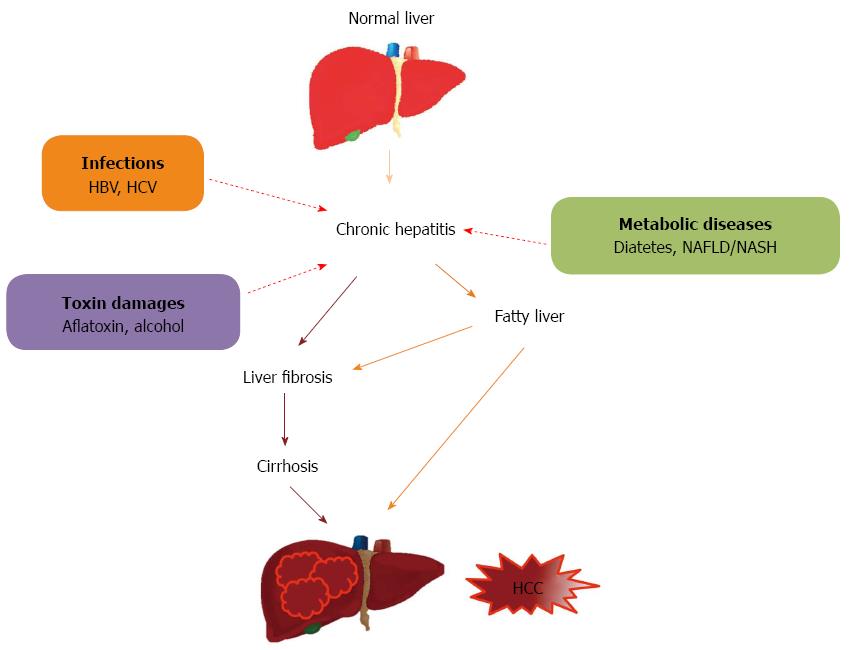Copyright
©The Author(s) 2015.
World J Gastroenterol. Nov 14, 2015; 21(42): 12042-12058
Published online Nov 14, 2015. doi: 10.3748/wjg.v21.i42.12042
Published online Nov 14, 2015. doi: 10.3748/wjg.v21.i42.12042
Figure 1 Pathogenesis and risk factors of hepatocellular carcinoma.
Hepatocellular carcinoma (HCC) formation results from multiple risk factors, including hepatitis B virus (HBV) and hepatitis C virus (HCV) infection, alcohol, Aflatoxin, and metabolic diseases. These risk factors induce chronic hepatitis, which activates inflammatory pathways. After decades, this inflammatory stress leads to DNA damage and cell cycle dysregulation in hepatocytes, which eventually leads to the development of HCC from chronic disease states, such as liver fibrosis and cirrhosis. Metabolic diseases progress into fatty liver diseases. NAFLD: Non-alcoholic fatty liver disease; NASH: Non-alcoholic steatohepatitis.
Figure 2 Schematic representation of programmable engineered nucleases of ZFNs, TALENs and CRISPR/Cas.
- Citation: Lu JW, Ho YJ, Yang YJ, Liao HA, Ciou SC, Lin LI, Ou DL. Zebrafish as a disease model for studying human hepatocellular carcinoma. World J Gastroenterol 2015; 21(42): 12042-12058
- URL: https://www.wjgnet.com/1007-9327/full/v21/i42/12042.htm
- DOI: https://dx.doi.org/10.3748/wjg.v21.i42.12042










